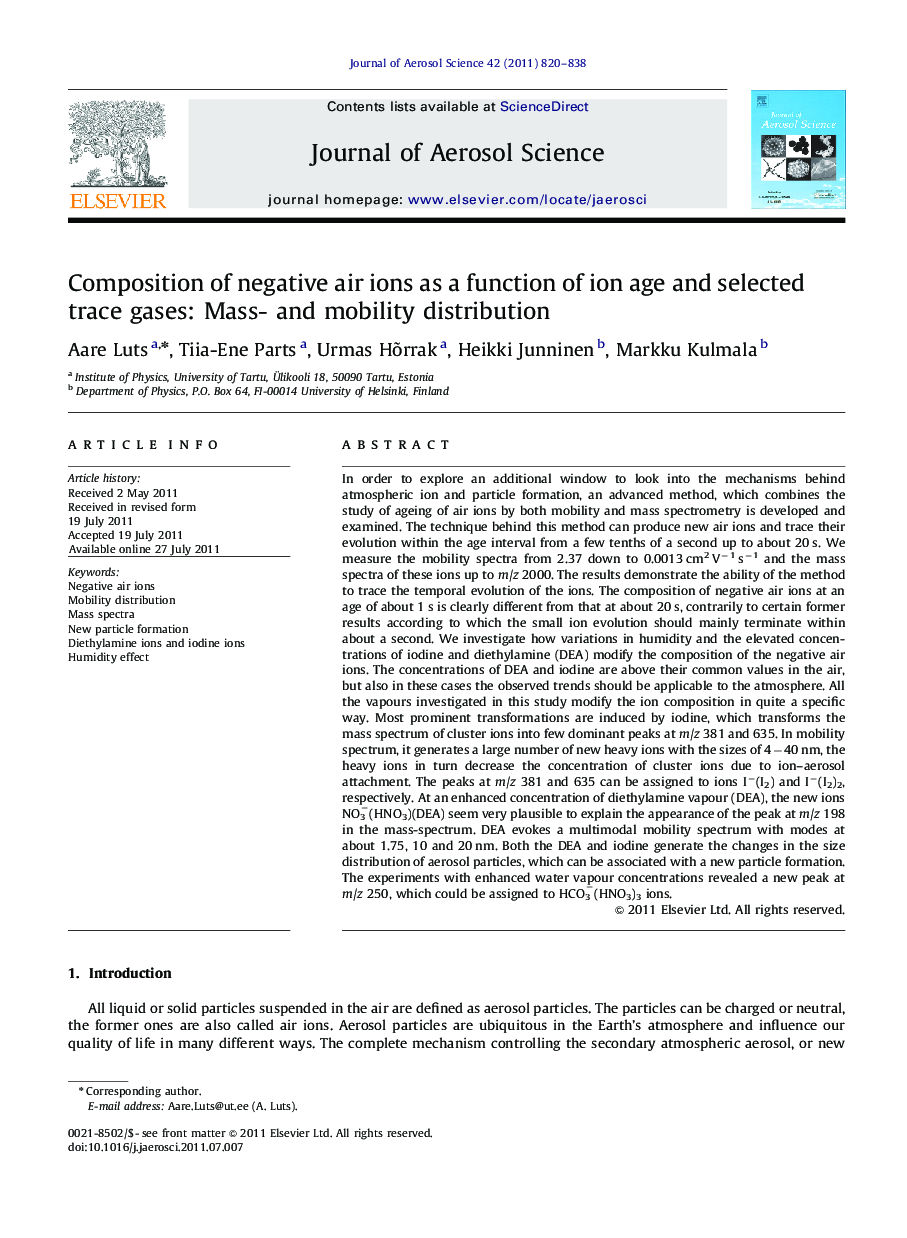| کد مقاله | کد نشریه | سال انتشار | مقاله انگلیسی | نسخه تمام متن |
|---|---|---|---|---|
| 4452755 | 1312099 | 2011 | 19 صفحه PDF | دانلود رایگان |

In order to explore an additional window to look into the mechanisms behind atmospheric ion and particle formation, an advanced method, which combines the study of ageing of air ions by both mobility and mass spectrometry is developed and examined. The technique behind this method can produce new air ions and trace their evolution within the age interval from a few tenths of a second up to about 20 s. We measure the mobility spectra from 2.37 down to 0.0013 cm2 V−1 s−1 and the mass spectra of these ions up to m/z 2000. The results demonstrate the ability of the method to trace the temporal evolution of the ions. The composition of negative air ions at an age of about 1 s is clearly different from that at about 20 s, contrarily to certain former results according to which the small ion evolution should mainly terminate within about a second. We investigate how variations in humidity and the elevated concentrations of iodine and diethylamine (DEA) modify the composition of the negative air ions. The concentrations of DEA and iodine are above their common values in the air, but also in these cases the observed trends should be applicable to the atmosphere. All the vapours investigated in this study modify the ion composition in quite a specific way. Most prominent transformations are induced by iodine, which transforms the mass spectrum of cluster ions into few dominant peaks at m/z 381 and 635. In mobility spectrum, it generates a large number of new heavy ions with the sizes of 4−40 nm, the heavy ions in turn decrease the concentration of cluster ions due to ion–aerosol attachment. The peaks at m/z 381 and 635 can be assigned to ions I−(I2) and I−(I2)2, respectively. At an enhanced concentration of diethylamine vapour (DEA), the new ions NO3−(HNO3)(DEA) seem very plausible to explain the appearance of the peak at m/z 198 in the mass-spectrum. DEA evokes a multimodal mobility spectrum with modes at about 1.75, 10 and 20 nm. Both the DEA and iodine generate the changes in the size distribution of aerosol particles, which can be associated with a new particle formation. The experiments with enhanced water vapour concentrations revealed a new peak at m/z 250, which could be assigned to HCO3−(HNO3)3 ions.
► A new method to study both the air ion ageing and the effects of trace gases.
► Simultaneous mass and mobility spectra of the air ions have been recorded.
► The 1 s aged ions were clearly different from the 20 s aged ions.
► Iodine brought forth the aerosol ions larger than 4 nm and including I−(I2)n.
► Diethylamine raised new modes at 1.75, 10 and 20 nm and a new peak at m/z 198.
Journal: Journal of Aerosol Science - Volume 42, Issue 11, November 2011, Pages 820–838